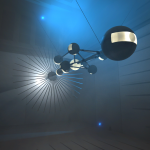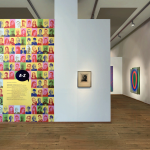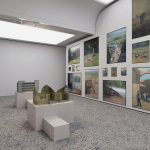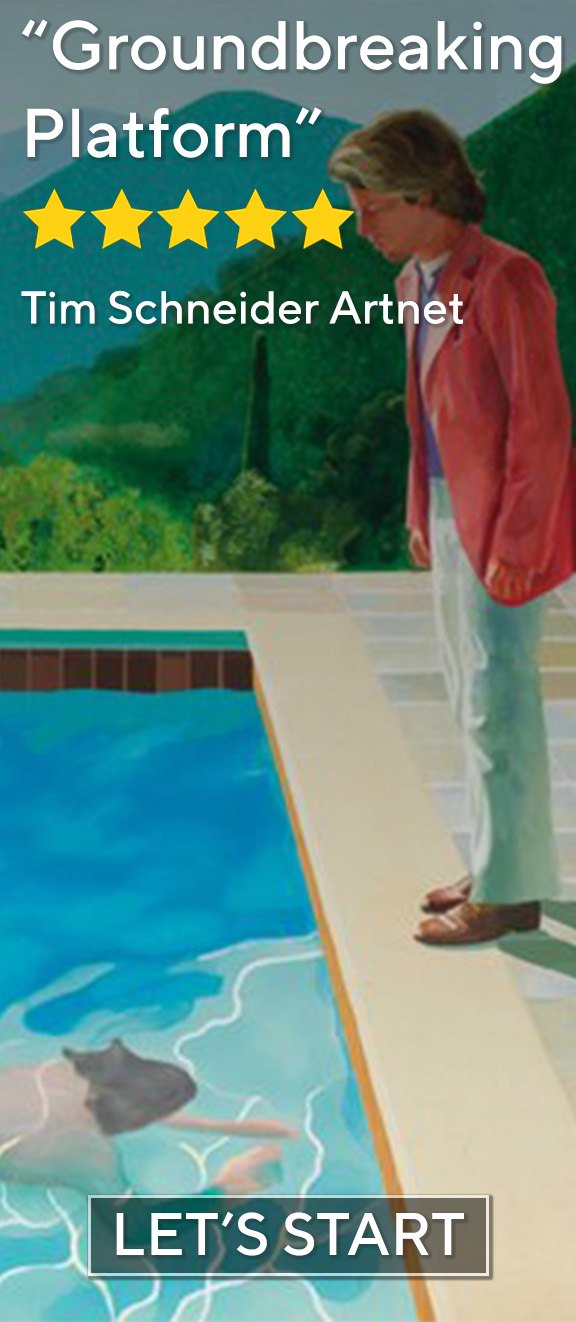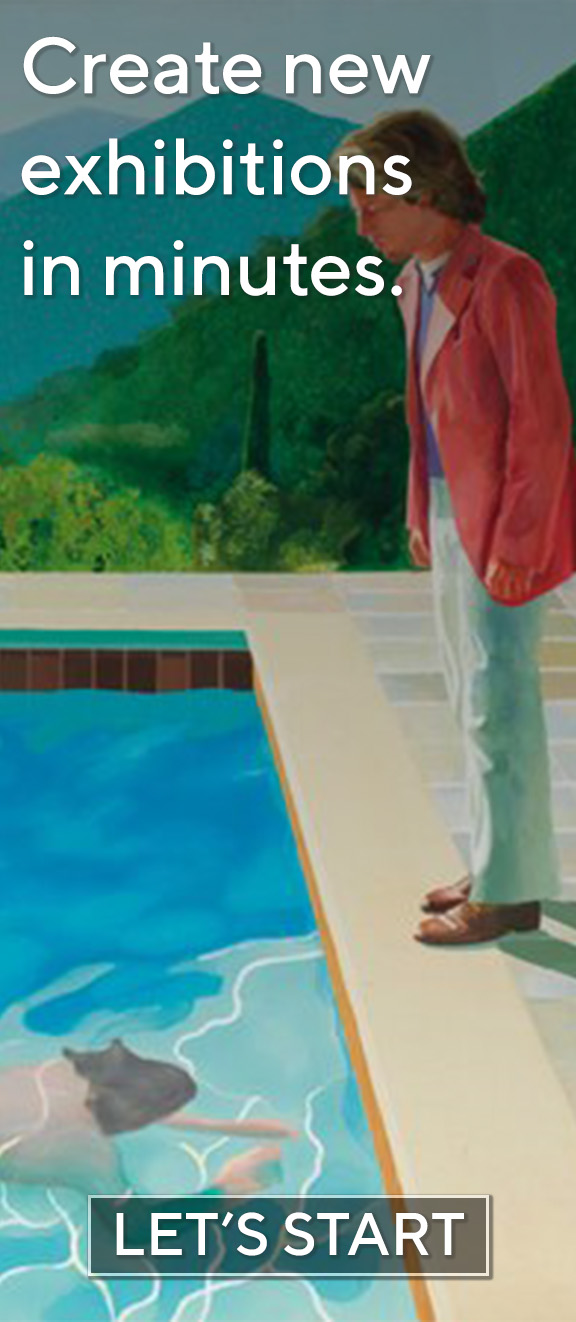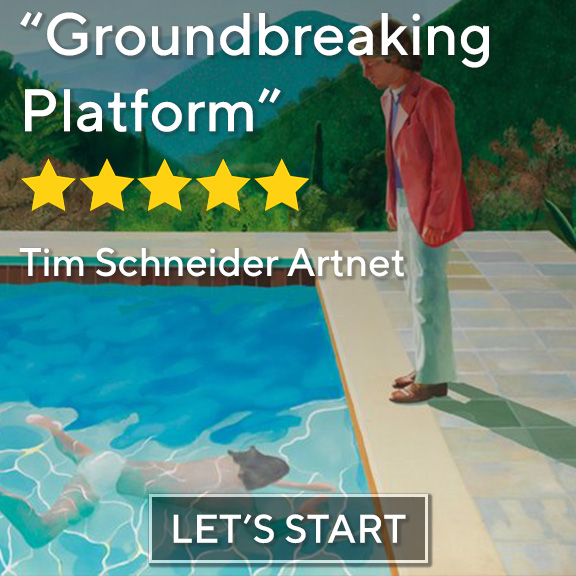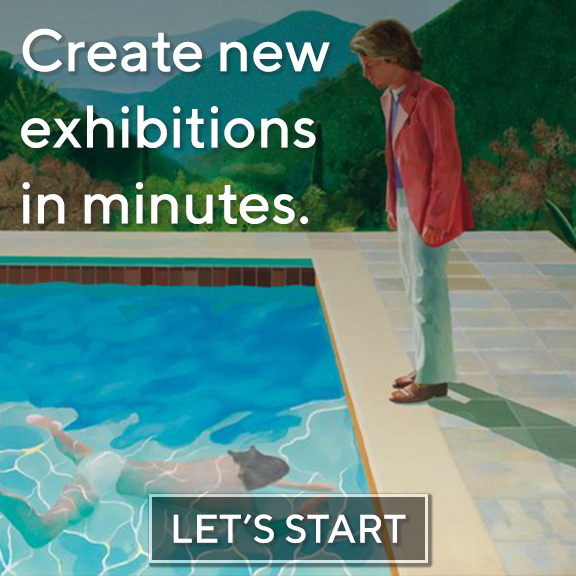Ai Weiwei’s “Roots and Branches” was on view from 5 November to 23 December 2016 at Lisson Gallery, New York.
Lisson Gallery’s 2016 exhibition “Roots and Branches” positions Ai Weiwei as both chronicler and critic of the modern condition—exploring themes of displacement, environmental degradation, and cultural erosion through monumental sculptures and immersive wallpaper installations. Ai’s solo show at Lisson New York reflects his evolving artistic language that bridges ancient traditions with contemporary concerns. The gallery’s raw industrial setting becomes a stage for contemplation, where massive cast-iron tree trunks and twisted root forms stand like relics of a vanishing world. At the heart of the installation is a visual dialogue between nature and industry, tradition and modernity, grounded in the artist’s own experiences of exile and political resistance.
Ai Weiwei, a Chinese contemporary artist, documentarian, and activist, has long used art as a vehicle for political dissent and cultural reflection. Born in 1957, he grew up in exile in the Gobi Desert, where his father, poet Ai Qing, was persecuted during the Anti-Rightist Movement. These early years shaped Ai’s deep reverence for nature and resilience amid upheaval. After studying in the U.S., where he encountered the conceptual practices of Warhol and Duchamp, Ai returned to China and became a central figure in its avant-garde movement. His work, often rooted in found materials and historical references, critiques authoritarianism while celebrating the persistence of individual expression. “Roots and Branches” continues this trajectory, channeling personal and collective histories through sculptural abstraction.
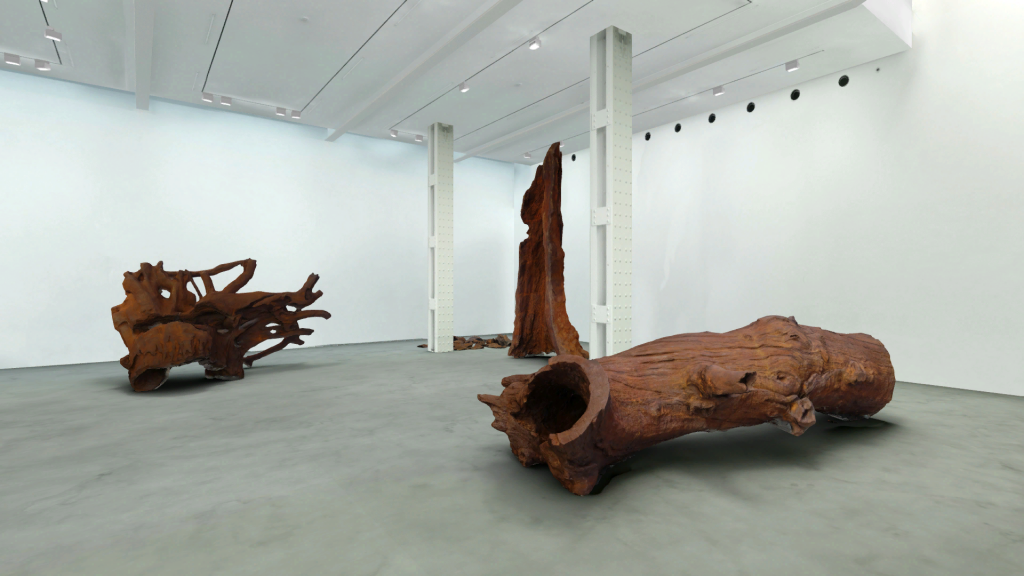
At the center of “Roots and Branches” are Ai Weiwei’s large-scale cast-iron works, which reimagine natural fragments as monuments to cultural dislocation. “Iron Tree Trunk” stretches nearly sixteen feet across the gallery floor, its gnarled surface mimicking the organic imperfections of wood but rendered in heavy, unyielding metal. The transformation of organic matter into industrial material evokes the environmental costs of rapid modernization in China—a theme Ai has explored since the late 2000s. Similarly, Iron Root captures the contorted beauty of uprooted trees, their hollows and knots suggesting both decay and endurance. These works, inspired by ancient Asian traditions of collecting dry tree fragments for contemplation, become metaphors for displaced communities and lost heritage.
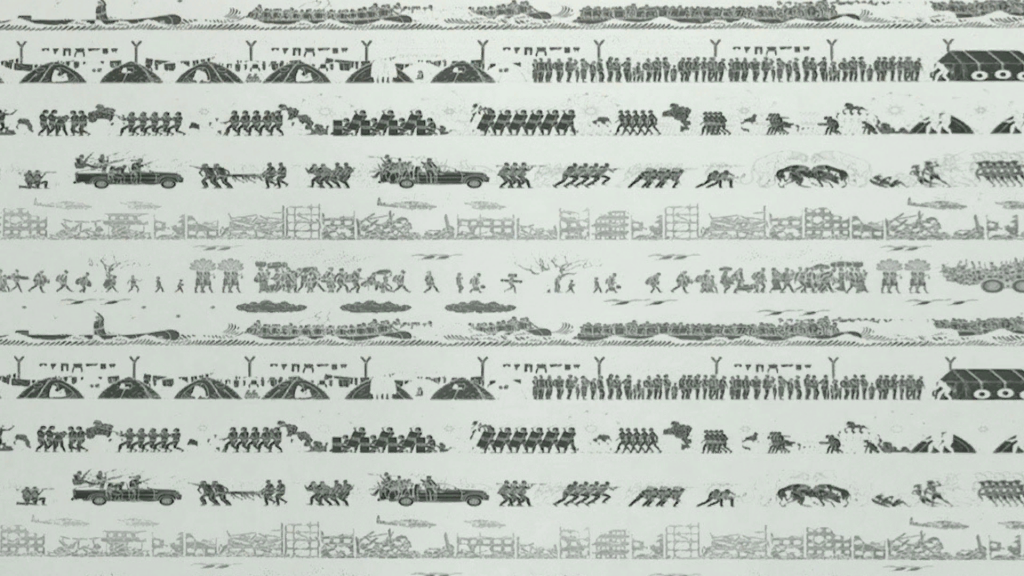
The installation “Odyssey” wallpaper envelops one wall in an endless procession of militarized imagery and scenes of migration, arranged in horizontal bands that echo ancient friezes. The repeating motifs—soldiers marching in unison, refugees fleeing ruins, makeshift camps emerging from chaos—create a cyclical narrative of conflict and survival. In one section, mythological creatures battle alongside modern soldiers, blending past and present in a surreal tableau. The wallpaper’s black-and-white palette and stylized figures evoke newsreels and propaganda posters, reinforcing the universality of displacement. It serves not only as backdrop but as counterpoint to the sculptures, framing them within a broader socio-political context.
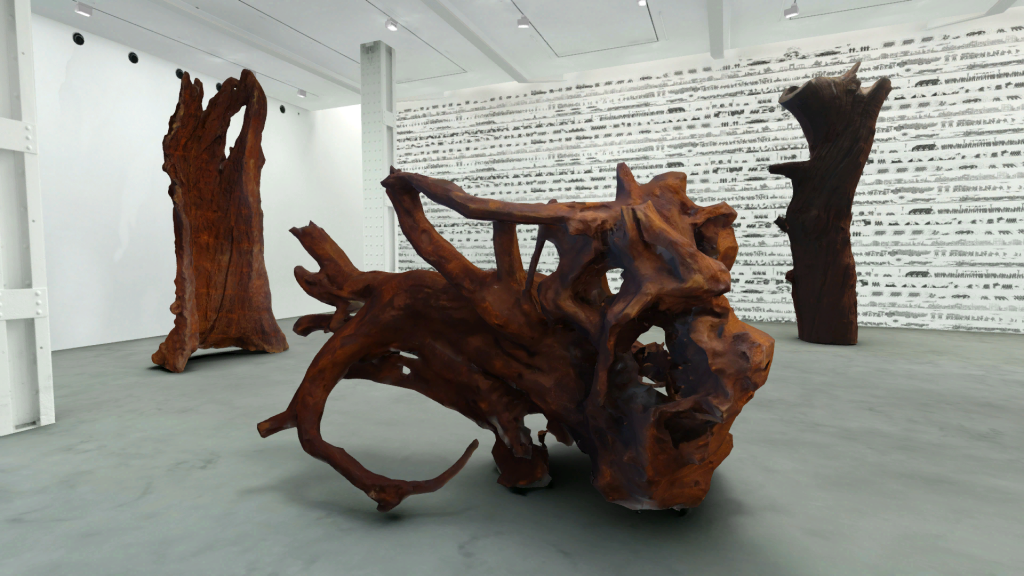
Ai Weiwei transforms cast iron into a meditation on loss, progress, and the fragile roots of identity in a globalized world.
Ai’s curatorial presentation at Lisson Gallery is marked by a minimalist rigor that allows each work to command attention. The raw concrete floors and high ceilings amplify the weight and scale of the iron sculptures, while the untreated surfaces emphasize their artificiality despite their natural appearance. The placement of the seven major sculptures creates a forest-like formation, echoing the architectural beams of the High Line just beyond the gallery walls. This deliberate interplay between interior and exterior spaces reinforces the idea of art as a living organism—one shaped by history, memory, and resistance. Supplementary elements like the wallpaper extend the thematic reach, transforming the gallery into a site of reflection rather than mere display.
These works force us to confront the cost of progress—not just ecologically, but culturally and humanely.
“Roots and Branches” resonates deeply in a moment defined by global migration crises and ecological uncertainty. Ai Weiwei does not offer solutions but instead invites viewers to dwell in the discomfort of unresolved histories and ongoing injustices. His use of cast iron—both enduring and brittle—mirrors the paradox of cultural preservation in the face of relentless change. The exhibition also recalls the dystopian landscapes of films like “Mad Max” or “Children of Men” , where remnants of civilization serve as haunting reminders of what once was. Yet unlike these cinematic visions, Ai’s work carries a quiet dignity—an insistence on remembering even as the world forgets.


